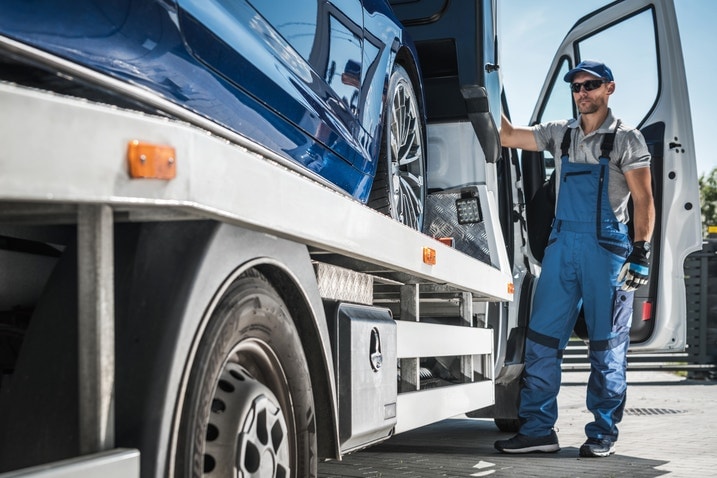Photo: welcomia | iStock via Getty Images
While uncommon, an auto lender can repossess ("repo" for short) a vehicle after just one missed payment, most will wait until payments are at least 60 days past due before sending out a repo agent. A repo can lead to some serious repercussions for your credit and mobility, but thankfully, there are some tactics that you can use to prevent a bad situation from getting worse.
After several years of record-low repossession rates, vehicle repos are rising again. Although the rate of inflation has slowed in recent months, increased living expenses, high interest rates, and the elevated costs associated with overpriced vehicle purchases made during the post-pandemic inventory shortages have made car repossession a concern for a growing number of borrowers.
According to Experian’s State of Automotive Finance Market report, just over 3% of all auto loans and leases were more than 30 days past due in the third quarter of 2024. So if you're struggling with your car payments, you can take some solace in the fact that you're certainly not alone.
What is car repossession?
Simply put, car repossession is when a lender recovers a vehicle because a borrower falls behind on their loan payments. Since the vehicle is owned by the lender until the borrower pays the balance of the loan off, it is the lender's legal right to take back the vehicle if it thinks it is necessary in order to recoup the remaining balance of the loan, or at least some of it.
Repossessions are divided into two types:
Voluntary: With a voluntary repossession, the borrower contacts the lender to inform them that they can no longer make payments on the vehicle, and the vehicle is surrendered to the lender. This scenario is generally preferable for everyone because it allows the borrower time to remove personal belongings from the vehicle, make transportation arrangements, and deal with the other logistical hurdles that come with a sudden lack of access to a vehicle. Voluntary repossession also allows the borrower to avoid the additional expenses that can arise from the lender enlisting the help of a repo agent to retrieve the vehicle.
Involuntary repossession, meanwhile, is the seizure of the vehicle by an agent working for the lender. Think of the repo man coming to your home and towing your car away. Although regulations vary from state to state, many do not obligate the lender to warn the borrower ahead of time about an impending repossession, and the timing of the seizure is entirely up to the lender's discretion.
Repo agents, however, are required to adhere to specific guidelines when executing a repossession. These too vary by state, but they generally prohibit the use of force (or threats of use of force) to repossess a vehicle, damaging property to retrieve a vehicle, and entering a locked garage to retrieve a vehicle.
How to prevent a repossession
Lenders aren’t particularly keen on repossessions because they will typically lose money on them: Not only do they miss out on interest from the unpaid portion of the loan, they're also on the hook for the time and expense involved in selling the vehicle. Selling the vehicle also might not cover the unpaid balance of the loan.
Because of that, a lender may be surprisingly receptive if a borrower proactively reaches out to discuss their options when they're struggling to make payments.
The lender may suggest temporary solutions, like interest-only payments. This allows the borrower to pay only the interest on the loan for a certain amount of time, and the lender would extend the payment period on the back end of the loan to cover the portion of the principal that wasn’t paid during that time. Restructuring the loan to extend its duration — which reduces the monthly payment amount — may be an option as well.
Refinancing the loan with a different lender is another option that a borrower can pursue to potentially buy some time. However, if the current loan is already in default, it may be difficult to find a lender who is willing to take on the risk.
The borrower also has the option of selling the car to pay off the remainder of the loan. But keep in mind that this solution really only makes sense if the remainder of outstanding loan balance is less than the vehicle's current market value.
Getting a repossessed car back
When a repossession has been performed, the lender is required to notify the borrower of their options to get the car back and the time frame that the borrower has to execute those options. Lenders are also required to hold the vehicle for a certain number of days before selling it, but it’s important to note that the length of this period varies from state to state as well. During this time, the borrower can attempt to recover the vehicle from the lender by making arrangements to pay off the balance owed as well as any fees associated with the repossession effort.
If the lender ultimately does put the vehicle up for sale or sells it at an auction, the borrower is still responsible for the difference if the amount it sells for doesn't exceed the remainder of the loan balance. The borrower can also opt to buy the vehicle back at auction by bidding on it, but if the price it sells for doesn't exceed the loan balance and any fees, the borrower will still be responsible for the difference.
If you're currently struggling with your vehicle finances, be sure to check out our articles on what to do if you can't make your car payment and the best ways to stay one step ahead of the repo man.


 by
by  edited by
edited by 


